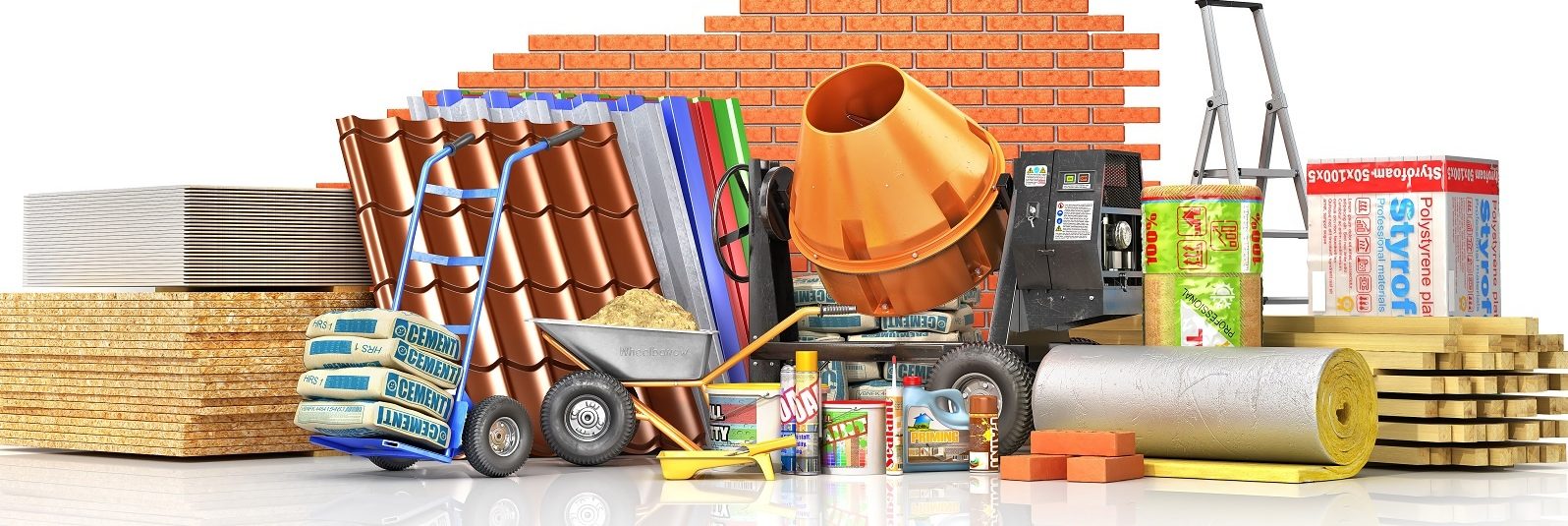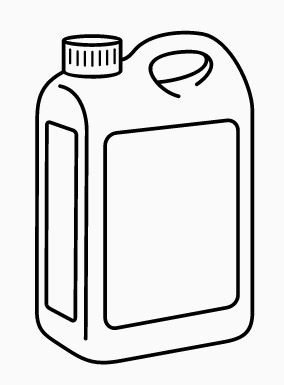Chemical Admixtures for Concrete
A state-of-art survey of commercial brands of integral chemical admixtures in concrete
A chemical admixture is a constituent added to concrete, to modify one or more properties in its fresh or hardened state. These ever-expanding list of modifications, include (1) reduction of water content of fresh concrete without affecting workability (2) retardation or acceleration of setting time (3) control of freeze-thaw performance (4) weight reduction by air entrainment (5) integral waterproofing (6) modification of viscosity for self-compacting, long-pumping and underwater concreting (7) shrinkage reduction or compensation (8) corrosion inhibition and (9) mitigation of alkali-silica reaction. Specifications of most of these admixtures are covered under ASTM C 494, BS 5075 and IS: 9103
Many brands and compositions of admixtures are available in market today. Different variants are used to achieve different extent of a desired result (e.g. more water reduction), combination of few desired results (e.g. water reduction + retardation), compatibility with other constituents (e.g. high-alumina cement, micro-silica), different applications (e.g. pavements, water retaining structures) and different grades of concrete (e.g. high performance concrete). The dosages of each variant also depend on applications and compatibility requirements on case-to-case basis. On important jobs, the variant and dosage are finalized after series of laboratory tests. In this article, we shall attempt to classify few brands from BASF, Fosroc, Pidilite and Sika based on common attributes and typology.
Water Reducing Admixtures
Water reducing admixtures, are used to reduce water content for required workability of fresh concrete. These admixtures are broadly of two types: Plasticizers or normal range water reducers (ASTM Type A, D, E) achieve 5-12% water reduction. Super-plasticizers or high-range water reducers (ASTM Type F, G) achieves 12-40% water reduction, for high performance concrete. Many brands of water reducers are commercially available with salient variations in (1) degree of water reduction achieved (2) combination of water reduction with other results such as retardation, water proofing, air entrainment etc (3) actual application (4) compatibility with other constituents (5) grade of concrete and (6) dosages.
Plasticizing is achieved by preventing the flocculation of cement during mixing. Two mechanisms are used (1) electrostatic repulsion by adsorbed plasticizer and (2) physical or steric separation by long backbone chains and lateral chains of the plasticizer molecule. In addition, workability is improved by (1) reduction of surface tension of water (2) reduction of turbulence in concrete flow by long-chained molecules lining up along direction of flow and (3) lubrication due to low molecular weight.
Chemical composition of water reducers are based on
- Lignosulphonate salts of sodium and calcium, obtained from fermented wood pulp liquor during manufacture of paper. Lignosulphonate based compounds work by electrostatic repulsion and are almost obsolete in use except for their additional utility such as air-entrainment and waterproofing. These are typically used at dosages of 0.3 – 0.5% by weight of cement for water reduction. Higher dosages are likely to cause undesirable retardation, bleeding and loss of strength.
- Sulphonated melamine formaldehyde (SMF) resin. SMF-based plasticizers are reportedly not regarded as very cost-effective. Currently no product in market is based on this composition.
- Sulphonated naphthalene formaldehyde (SNF) polymer, neutralized with sodium hydroxide or lime. The most common type of plasticizers for ordinary grades of concrete today are based on SNF composition. Some brands can act both in normal and high range by changing dosage to as much as 0.7 – 1% by weight of cement. Some SNF compositions also double up as retarders and shrinkage compensating admixtures. However, SNF compositions have reported maximum incompatibility with cement and aggregates.
- Polycarboxylic ether (PCE) polymer with long backbone and lateral chain. PCE based super-plasticizers are being increasingly used for high performance concrete. PCE compositions are more sensitive to overdosing causing air entrainment and loss of strength.
A catalogue summary that enables initial selection of brands depending on the requirement at hand, is given below. Final selection is made based on the actual application, compatibility, manufacturers credentials and cost.
Set controlling admixtures
Set controlling chemicals used to accelerate or decelerate setting time. Acceleration and deceleration are especially important during cold weather or hot weather concreting respectively). The chemical action of acceleration comprises of promoting the dissolution of silicates that are slowest in hydration. On the other hand, chemical action of retardants comprises of impeding dissolution of aluminates, that are fastest in hydration.
Retardants (Type B)
- Gypsum-based retardants
- Inorganic compositions (Borates, phosphates of Zinc and Copper): These are not generally used because of their high costs and low solubility
- Organic compositions (Gluconates, Lignosulphonates and carbohydrates like corn syrup and dextrose). These are also water reducing (Type D & G) admixtures.
- Carboxylic acid salts of sodium, zinc and lead salts: Sika Plastiment VZ, VZ-1, VZ-2 are based on this composition.
- Phosphonates and other phosphorus containing organic acids and salts, gluconic acid, etc. used for extended set. This may be used for stabilization of wash-water for concrete and long hauls. MasterSet DELVO from BASF is based on this composition.
Accelerators (Type C)
- Organic Salts of formic acid and tri-ethanol amine and Inorganic salts (Thiocyanates): Fosroc Sprayset SL, Sika Rapid-1, Sika Sigunit L-54 AF are based on this composition and especially useful in guniting and shotcrete applications.
- Formaldehyde based (Water reducing and accelerating Type E)
- Polycarboxylic compositions: SikaPlast1000 ES is an accelerator based on this composition.
Retardant-cum-accelerators (Type B & C)
- Calcium chloride or calcium nitrate (retards at low dose and accelerates at high dose). Use of chlorides and nitrates are not encouraged by Code in many regions.
- Potassium and sodium carbonate, sodium silicate compositions (retards at lower dose and accelerates at higher dose)
Waterproofing admixtures
Water transport through concrete occurs in one or more of following mechanisms (1) hydraulic gradient through continuous pores, that may be accentuated by capillary action (2) diffusion of water vapour that may be accentuated by thermal gradients (3) migration of ions due to electric gradient caused by ion concentrations. The pores in concrete can be intrinsic (due to natural voids between aggregates, excess water evaporation and air entrapment) or induced by construction joints, cracks or construction defects such as honeycombing. Prevention of water transport across a concrete barrier is critical in applications where one side is in contact with water. By far, waterproofing chemicals employ one of two mechanisms (1) Repulsion of water from pores by hydrophobic compositions and (2) Reduction of permeability by filling up voids and pores)
Hydrophobic chemicals, such as oleate soaps, fatty acids, vegetable oils, greases, paraffin waxes form a water-repelling film on the walls of pores, that prevent wetting of these areas. These may however reduce strength of concrete due to air entrapment. Some of them are not compatible with naphthalene based superplasticizers. Thermoplastic, plasticizer-free dispersible polymer powders derived primarily from vinyl acetate and ethylene (such as Fosroc Conplast WL Xtra) form more effective hydrophobic films by dispersing in presence of cement and water. Similarly calcium, ammonium and butyl stearate compounds (e.g. Sika Noleek) react with lime in cement to form effective hydrophobic films. Fosroc Conplast WL, X421IC, SikaCim are lignosulphonate based water repellants, in addition to brands indicated in combination with water reducers in the table above.
Integral latex additives (acrylic-resin or styrene-butadiene-rubber water emulsion) are more effective in hydrophobic action. A polymer film forms along with the hydrating cement, resulting in a monolithic matrix. This causes improved paste-aggregate bond, resistance to crack propagation, and water-tightness of concrete. Dr. Fixit Pidicrete URP, Dr. Fixit Pidiproof LW+ are based on styrene-butadiene modified latex.
Ultra-fine pozzolanic materials such as fly-ash or micro-silica are capable of filling the voids densely while also participating in the hydration. Other inert ultra-fines such as talc and clays (e.g. Fosroc Conplast WP90) and some globular polymers are also capable of packing the voids to some extent. Polymeric hydrophobic chemicals are sometimes used in combination with globular ultra-fine polymers.
By far most permeability reducers in environments with a hydrostatic head such as rafts and reservoirs adopt crystal growth technology. This comprises of proprietary chemicals that react with byproducts of hydration such as calcium hydroxide to form growing crystals that plug capillary pores, voids and cracks. Due to continuous crystallization of pores and cracks with any incoming moisture, this is a very effective solution. Many manufacturers claim that crystalline products can bridge and seal static crack width up to 0.4mm and can withstand hydrostatic pressures of 122m of head. Examples of brands for crystalline waterproofing are Fosroc Conplast Crystalline and SikaControl WT-200 P
Other Admixtures
Air Entraining Admixtures (AEA)
Entrained air in concrete offers stability against freeze-thaw cycles, reduce bleeding and segregation, improve workability by acting as ball bearings and reduces weight. Air-entraining agents are surface-active chemicals based on neutralized vinsol resin (Fosroc Conplast AEA), derivatized pine rosin, and detergent foaming agents (Conplast F297) .
Viscosity Modifying Agents (VMA)
Viscosity modification is required to provide stability to extremely flowable concrete, underwater applications and self-compacting concrete. VMAs are long-chain water soluble polysaccharides (Cellulose ether derivatives and microbial source polysaccharides, such as Welan gum) that enhance the water retention capacity of the paste. Fosroc Auramix V200 and Sika Stabilizer-4 R are common brands in self-compacting concrete; Fosroc Conplast UW, UWL; Sika UCS h are used in underwater applications and Sika Pump is used for increasing viscosity in long-haul pumping.
Shrinkage reducing and Shrinkage compensating
Shrinkage reducing admixtures are based on polyoxyalkylene alkyl ether that reduce the surface tension of water and consequently tensile stresses on drying. Naphtalene based expansive aggregates are used to produce expansive gases that compensates for settlement and shrinkage of concrete, usually in combination with plasticizing. (See Fosroc Cebex in Table for water reducers)
Corrosion inhibitors
Rebars in concrete are protected from corrosion by a passivating film of FeO on steel surface placed in alkaline environment provided by CaOH produced during hydration. Over a period of time, the CaOH reacts with atmospheric carbon dioxide lowering the pH, that breaks down the protective FeO layer. This process is called Carbonation. Rusting proceeds with availability of moisture and oxygen, to a threshold level beyond which rusting can continue even without presence of moisture and oxygen.
Corrosion inhibitors functions in mechanisms such as oxidizing or non-oxidizing passivators of steel, oxygen scavengers, adsorption film formation on steel, hydrophobic (water repelling) action and cathode formation. Inorganic additives for corrosion inhibition are based on calcium nitrite (Conplast CN) and organic compositions are based on amino alcohols (Sika FerroGard-901). Some commercially available admixtures are two-part products, such as those containing amines and esters. The amines coat the steel and provide a film on the steel surface, while the esters make the paste hydrophobic and reduce the availability of water for the cathodic reaction.
Antifreeze compounds
These lower the freezing point of water. For example, NH4OH, calcium and sodium nitrates and nitrites, CaCl2, K2CO3, glycols, etc.
Alkali-Aggregate reaction mitigating admixtures
Compounds of active alkalis such as Lithium (e.g. LiOH, Li2NO3, etc.), which bind the reactive silica to form non-expansive compounds. The cost of these admixtures, however, is prohibitive.
Post a Comment
You must be logged in to post a comment.










